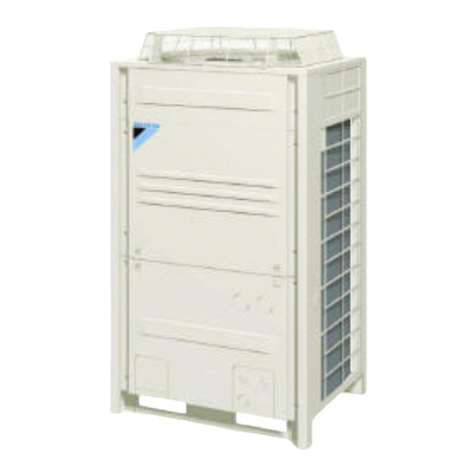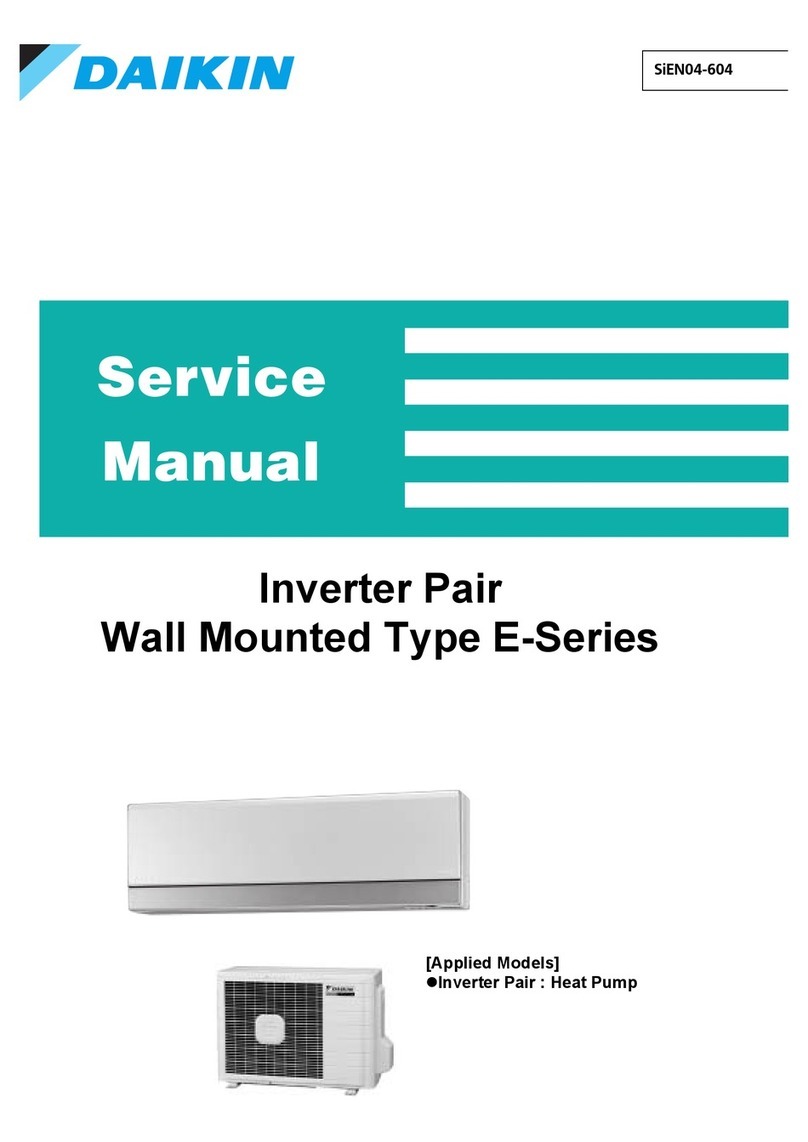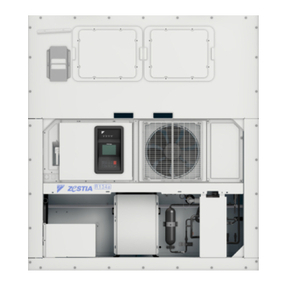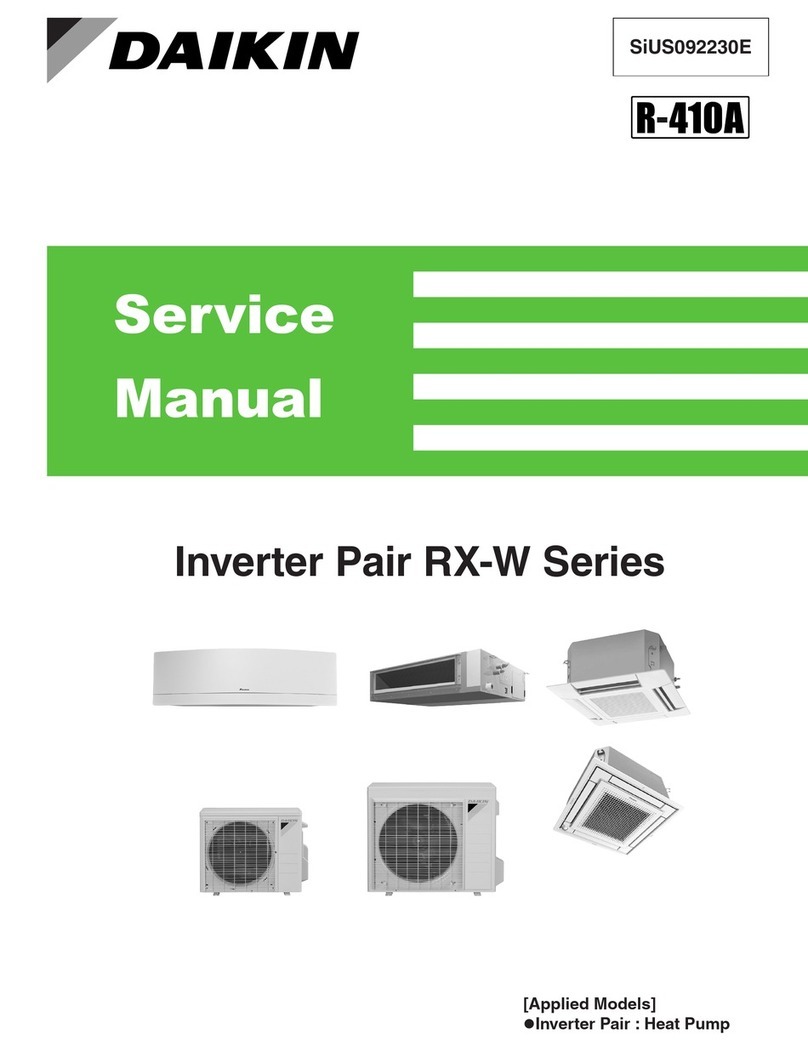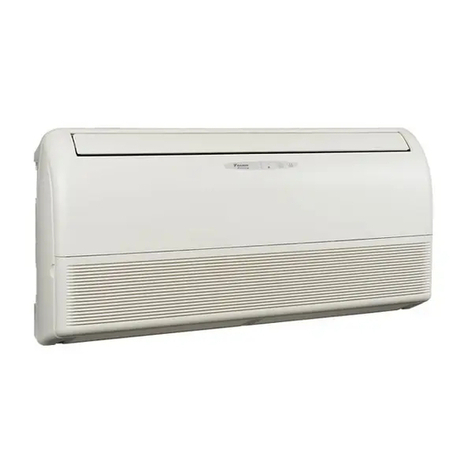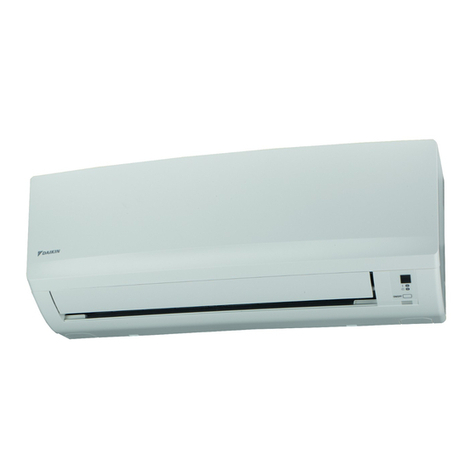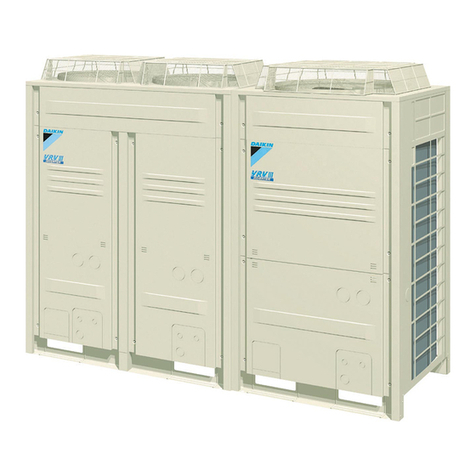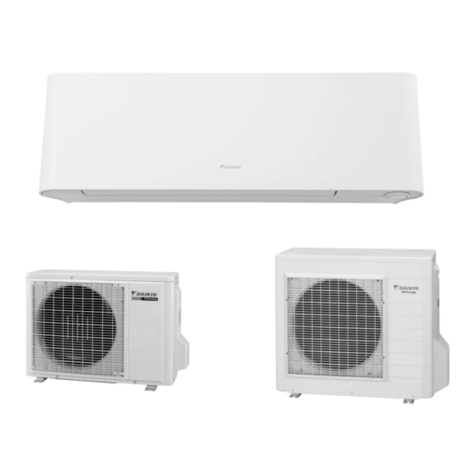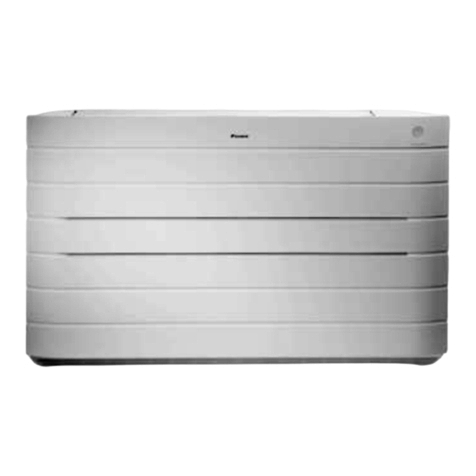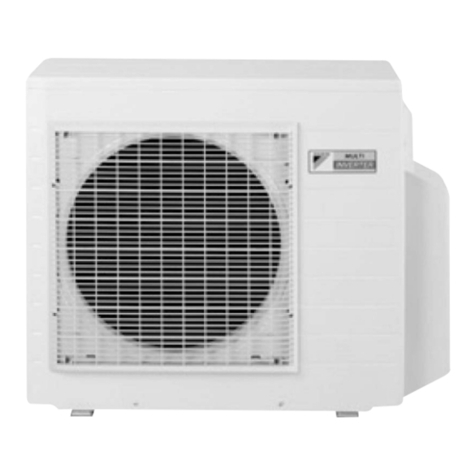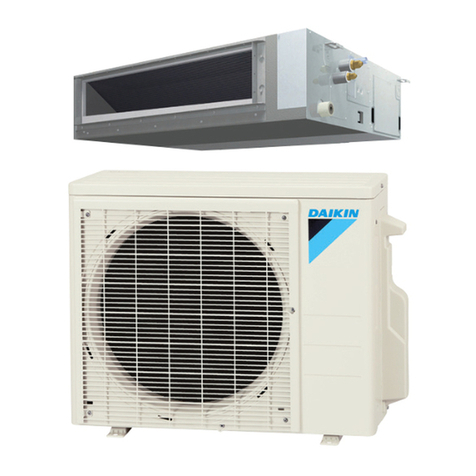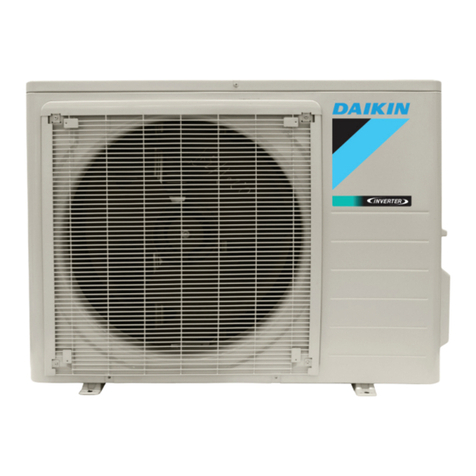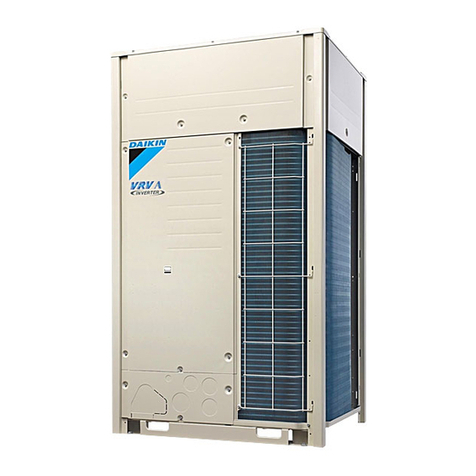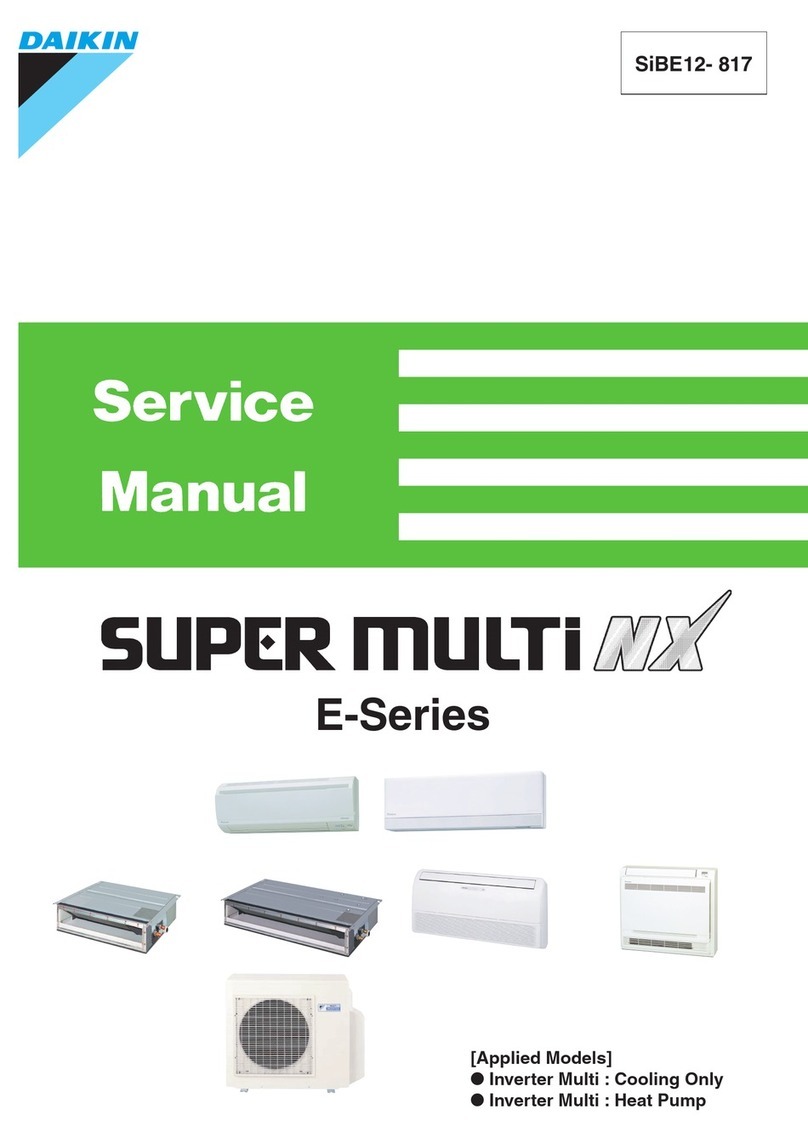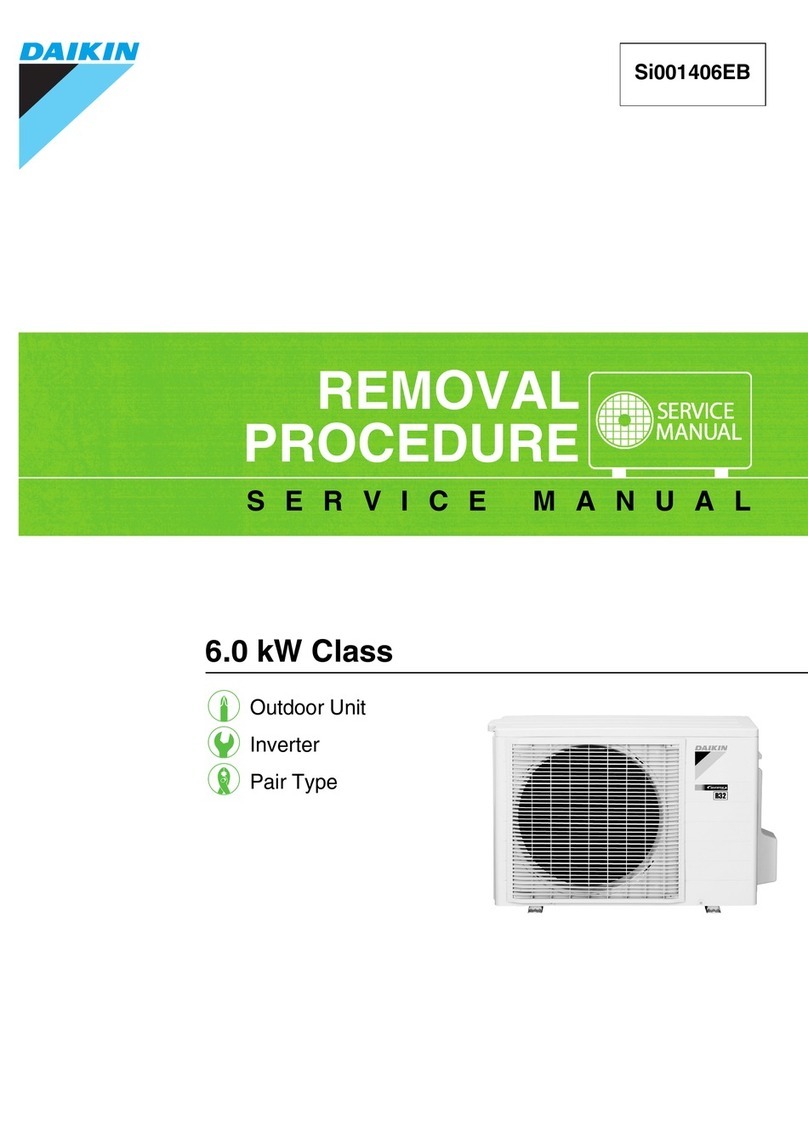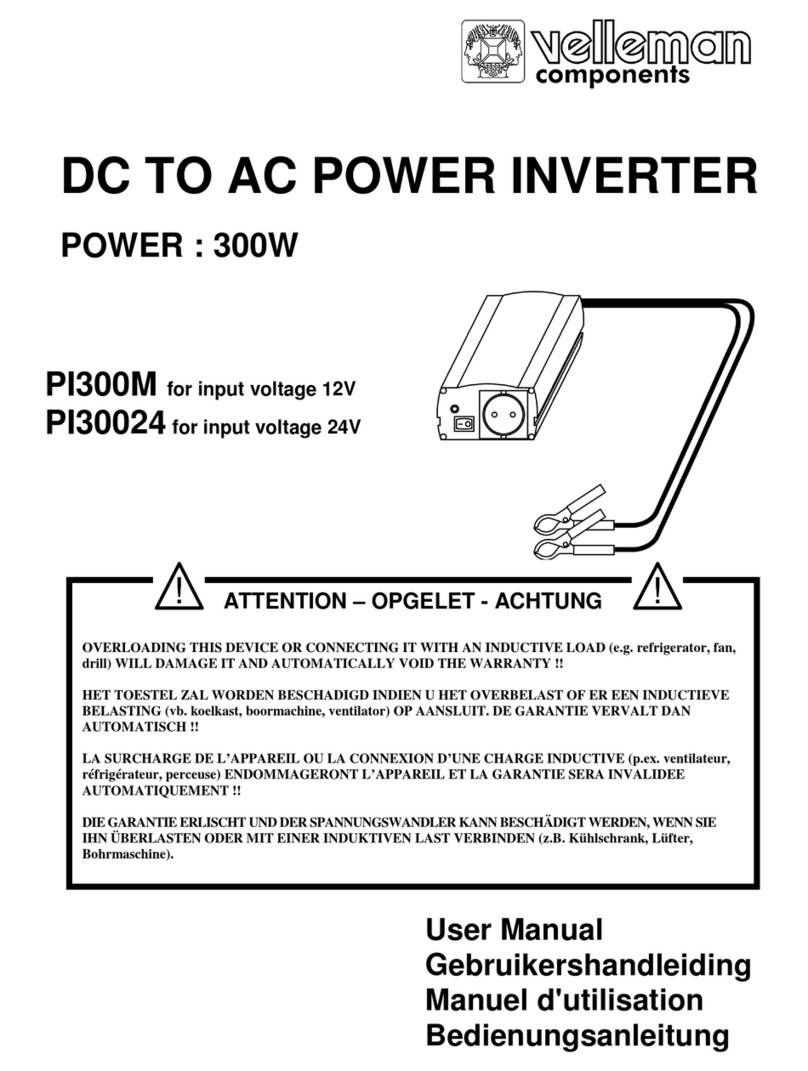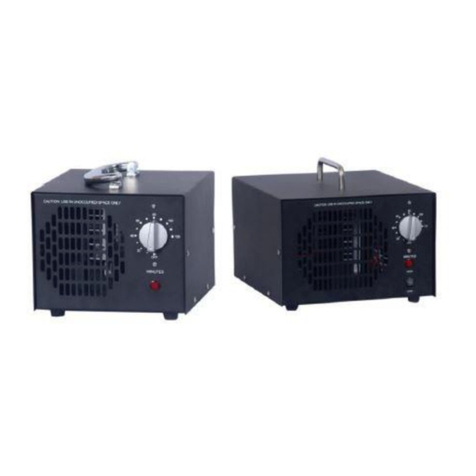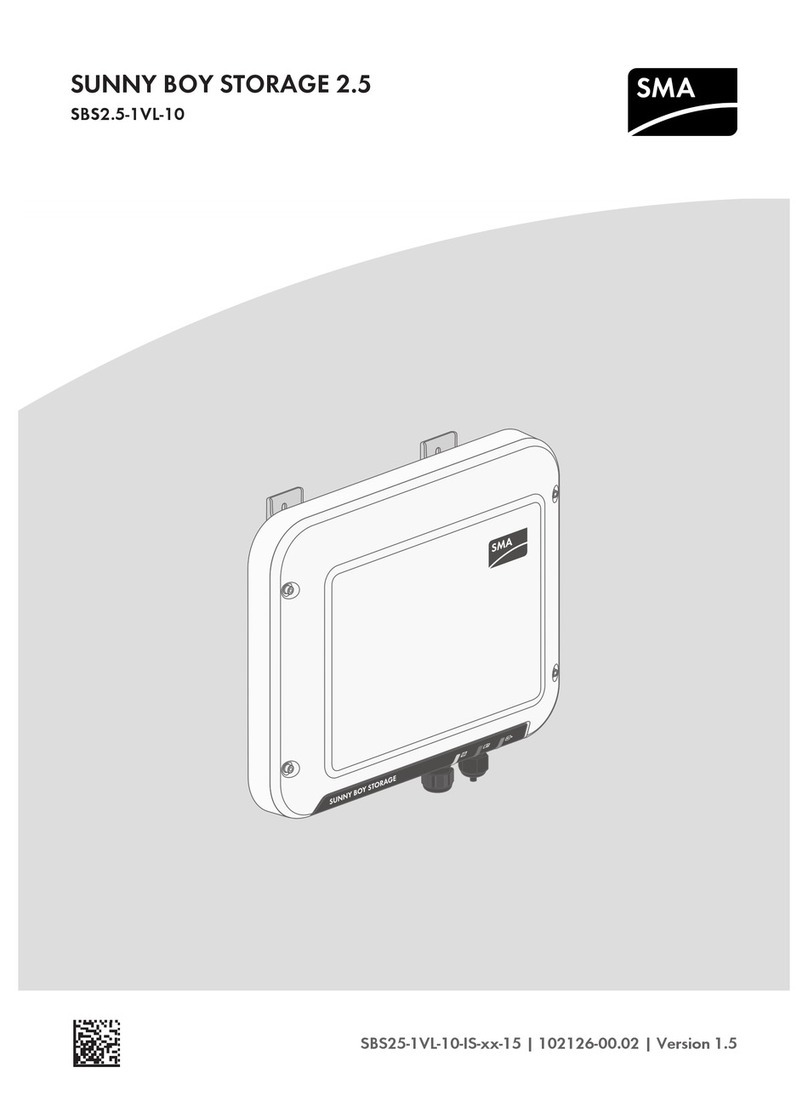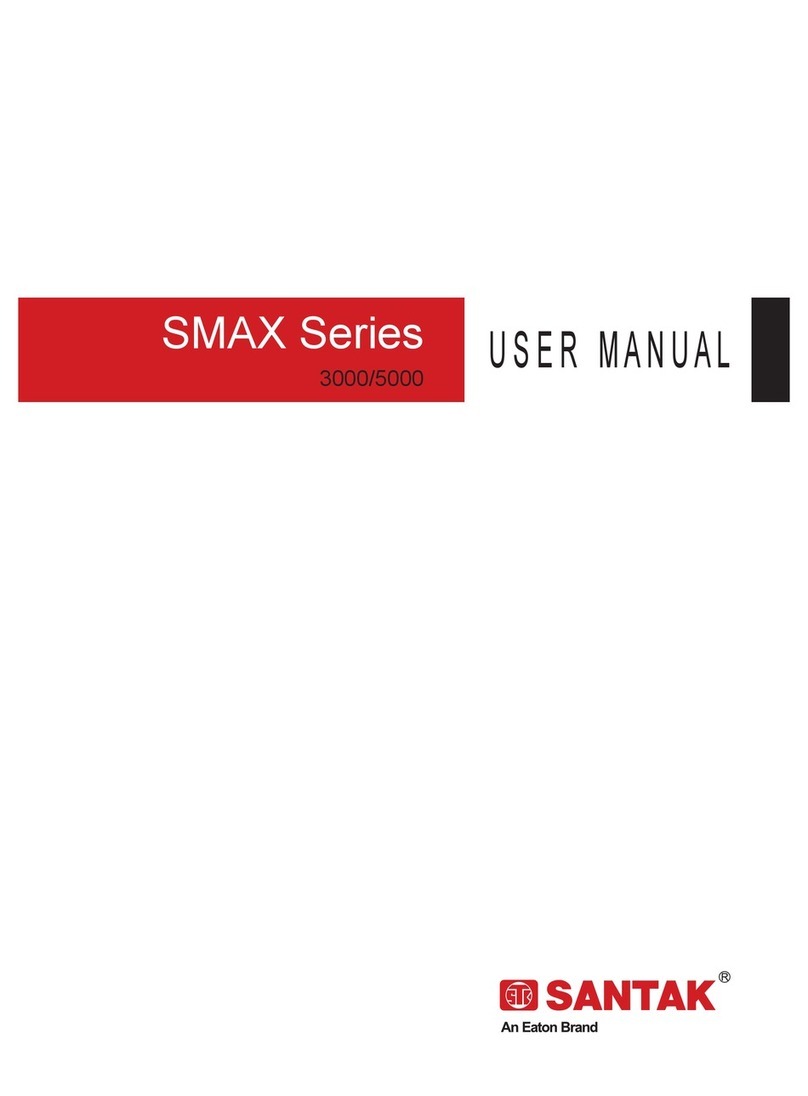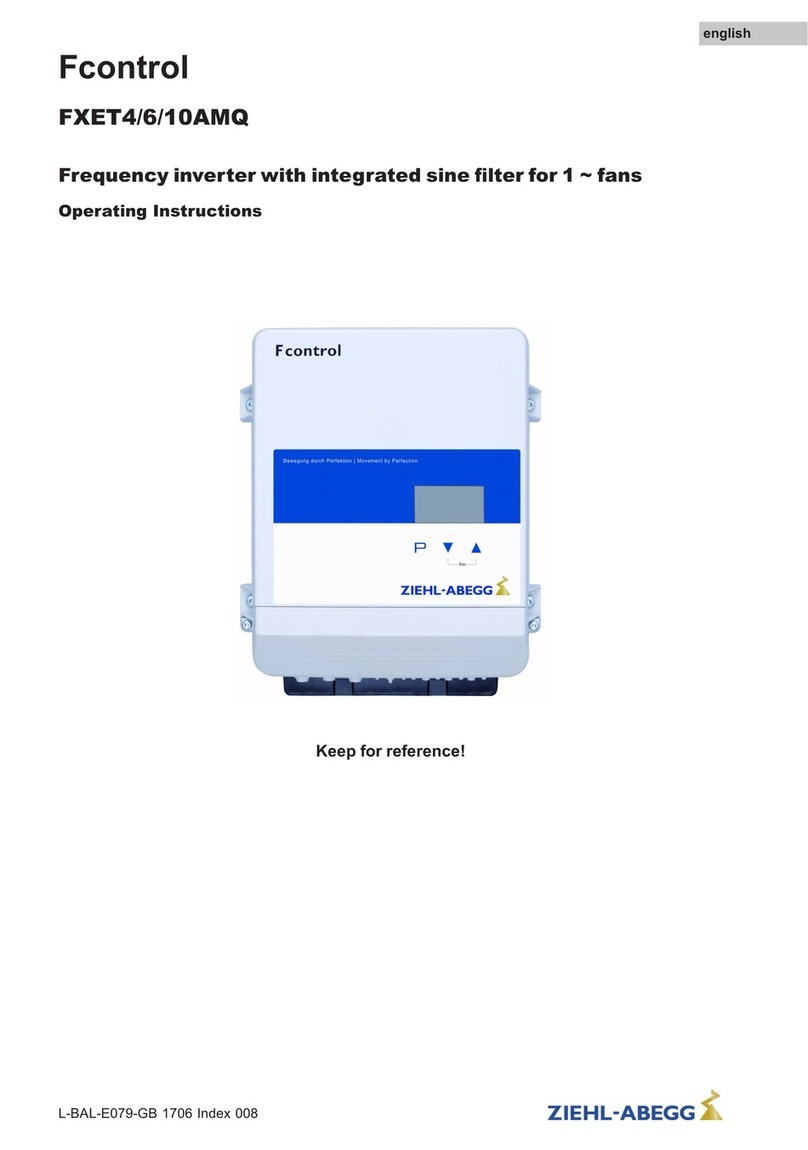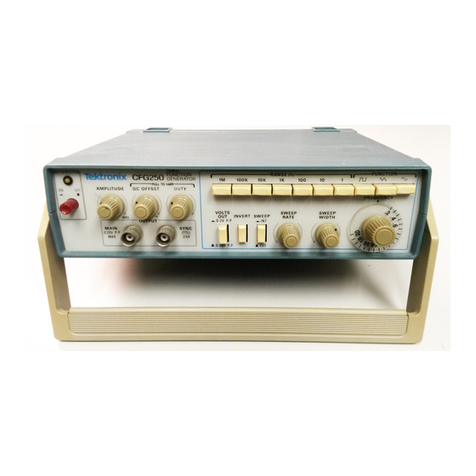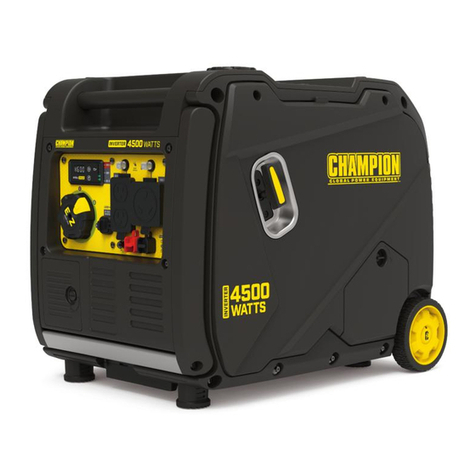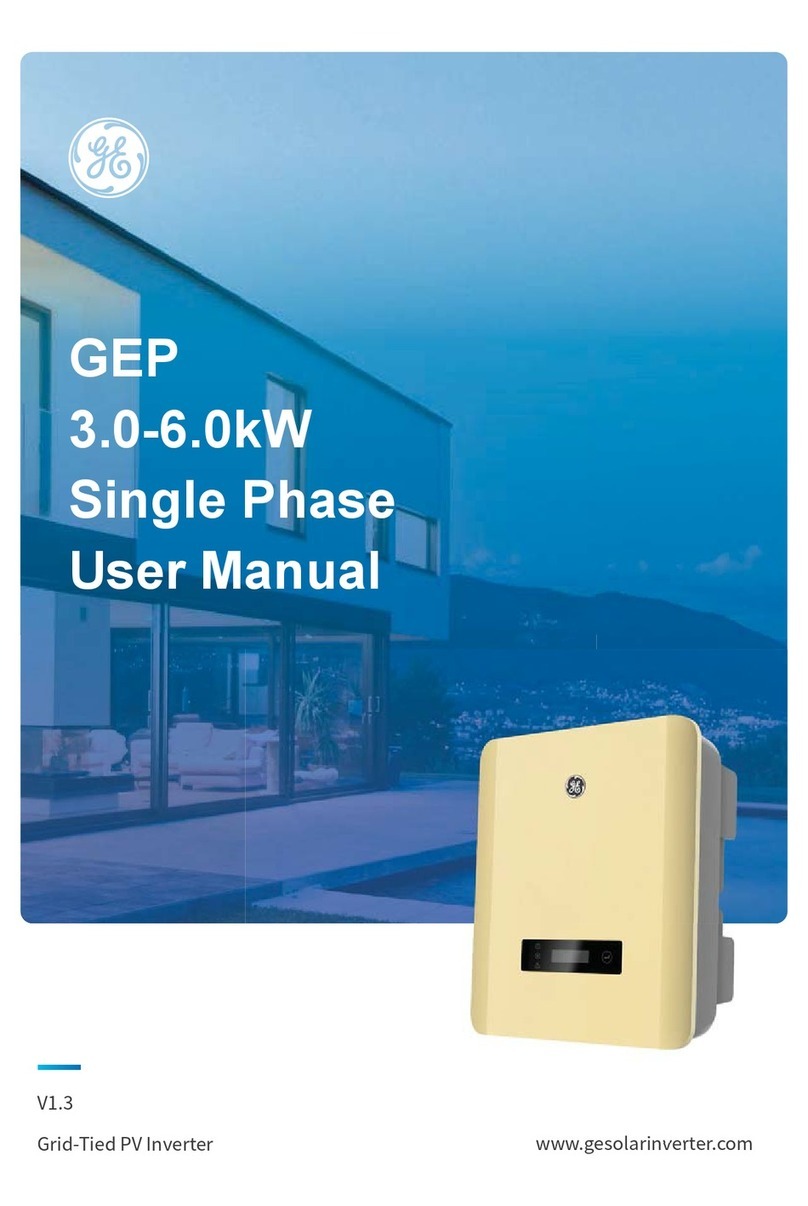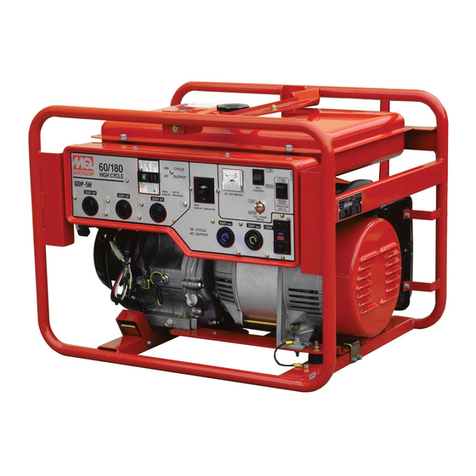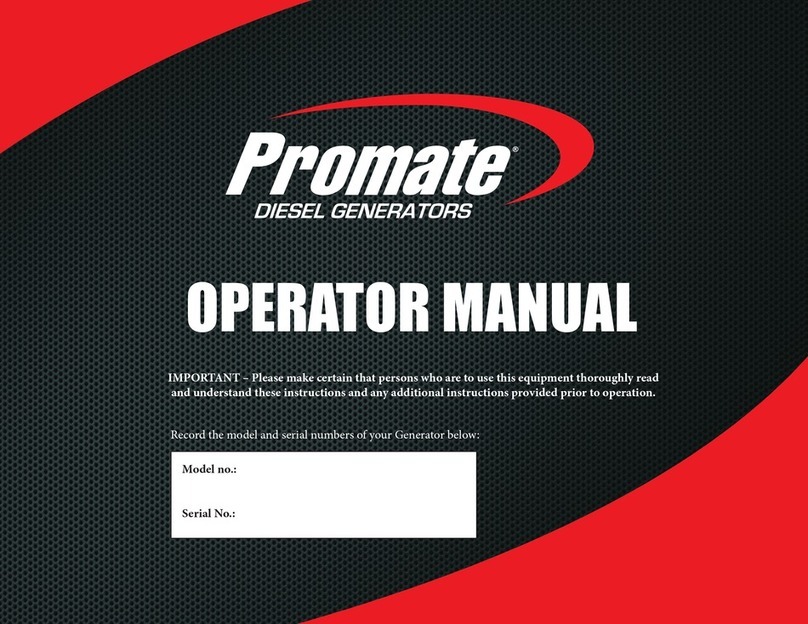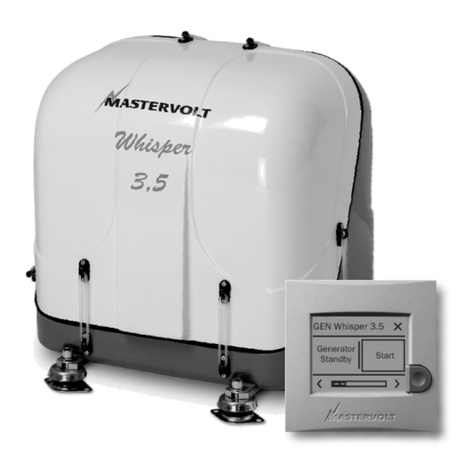
SYSTEM OPERATION
10
This section gives a basic description of heat pump condenser
unit operation, its various components and their basic opera-
tion. Ensure your system is properly sized for heat gain and loss
according to methods of the Air Conditioning Contractors Asso-
ciation (ACCA) or equivalent.
CONDENSING UNIT
The ambient air is pulled through the heat pump condenser coil
by a direct drive propeller fan. This air is then discharged out of
the top of the cabinet. These units are designed for free air dis-
charge, so no additional resistance, like duct work, shall be at-
tached.
The gas and liquid line connections on present models are of the
sweat type for field piping with refrigerant type copper. Front
seating valves are factory installed to accept the field run copper.
The total refrigerant charge for a normal installation is factory
installed in the heat pump condenser unit.
DZ20VC models are available in 2 through 5 ton sizes and use R-
410A refrigerant. They are designed for 208/230 volt single phase
applications.
DZ20VC R-410A model units use a Daikin rotary compressor.
These models are DAIKIN ONE+™ and ComfortNetTM ready.
There are a number of design characteristics which are different
from the traditional compressors.
DZ20VC models use "FVC50K" which is NOT compatible with
mineral oil based lubricants like 3GS. "FVC50K" oil (required by
the manufacturer) must be used if additional oil is required.
NOTE: For models DZ20VC0601B* or earlier, use a Daikin Scroll
compressor "FVC68D" oil"
COOLING
The refrigerant used in the system is R-410A. It is a clear, color-
less, non-toxic and non-irritating liquid. R-410A is a 50:50 blend
of R-32 and R-125. The boiling point at atmospheric pressure is
-62.9°F.
A few of the important principles that make the refrigeration cycle
possible are: heat always flows from a warmer to a cooler body.
Under lower pressure, a refrigerant will absorb heat and vapor-
ize at a low temperature. The vapors may be drawn off and con-
densed at a higher pressure and temperature to be used again.
The indoor evaporator coil functions to cool and dehumidify the
air conditioned spaces through the evaporative process taking
place within the coil tubes.
NOTE: The pressures and temperatures shown in the refrigerant
cycle illustrations on the following pages are for demonstration
purposes only. Actual temperatures and pressures are to be ob-
tained from the "Expanded Performance Chart".
Liquid refrigerant at condensing pressure and temperatures leaves
the outdoor condensing coil through the drier and is metered
into the indoor coil through the metering device. As the cool, low
pressure, saturated refrigerant enters the tubes of the indoor
coil, a portion of the liquid immediately vaporizes. It continues
to soak up heat and vaporizes as it proceeds through the coil,
cooling the indoor coil down to about 48°F.
Heat is continually being transferred to the cool fins and tubes of
the indoor evaporator coil by the warm system air. This warming
process causes the refrigerant to boil. The heat removed from the
air is carried off by the vapor.
As the vapor passes through the last tubes of the coil, it becomes
superheated. That is, it absorbs more heat than is necessary to
vaporize it. This is assurance that only dry gas will reach the
compressor. Liquid reaching the compressor can weaken or break
compressor valves.
The compressor increases the pressure of the gas, thus adding
more heat, and discharges hot, high pressure superheated gas
into the outdoor condenser coil.
In the condenser coil, the hot refrigerant gas, being warmer than
the outdoor air, first loses its superheat by heat transferred from
the gas through the tubes and fins of the coil. The refrigerant now
becomes saturated, part liquid, part vapor and then continues to
give up heat until it condenses to a liquid alone. Once the vapor is
fully liquefied, it continues to give up heat which subcools the
liquid, and it is ready to repeat the cycle.
The inverter system can stop the compressor or outdoor fan to
protect the unit. The inverter system can run higher compressor
speed than required from thermostat to recover compressor oil
that flows.
HEATING
The heating portion of the refrigeration cycle is similar to the
cooling cycle. By de-energizing the reversing valve solenoid coil,
the flow of the refrigerant is reversed. The indoor coil now be-
comes the heat pump condenser coil, and the outdoor coil be-
comes the evaporator coil. The check valve at the outdoor coil
will be forced closed by the refrigerant flow, thereby utilizing the
outdoor expansion device. An electronic expansion valve meters
the condensed refrigerant to the outdoor coil.
DEFROST CYCLE
The defrosting of the outdoor coil is controlled by the Control
Board and the outdoor coil temperature thermistor and defrost
sensor. The outdoor coil temperature thermistor (Tm) sensor is
clamped to a return bend entering the outdoor coil and the de-
frost sensor at bottom flowrator leg at outdoor coil outlet. De-
frost timing periods of 30, 60, 90 or 120 minutes may be selected
via the thermostat setting. Control Board will initiate time de-
frost at the interval selected from the thermostat. During opera-
tion, the microprocessor on the Control Board checks the two
coil and defrost temperature (Tmand Tb) via sensors every 5 sec-
onds in heating mode. When the Control Board detects the coil
temperature to be high enough (approximately 54 °F) and defrost
sensor more than 43 °F for 30 seconds, the defrost cycle is termi-
nated and the timing period is reset. The field service personnel
can also advance a heat pump to the defrost cycle by selecting
“force defrost” option from thermostat.

